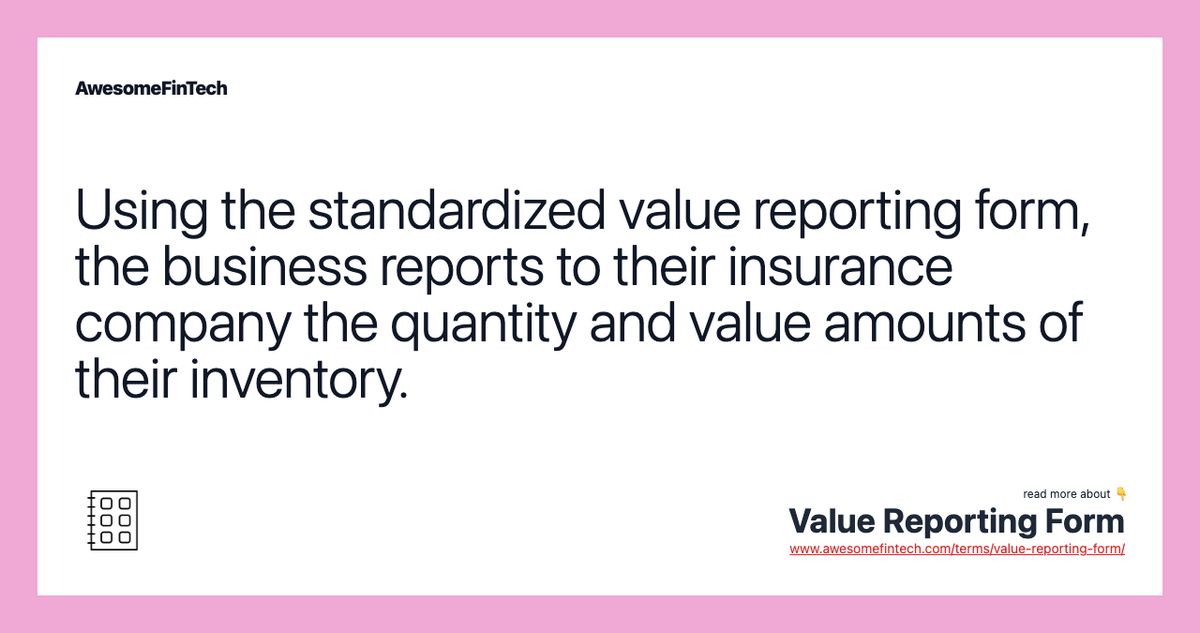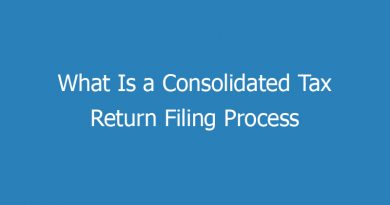Value Reporting Form What It Is How It Works

Contents
Value Reporting Form: What It Is, How It Works
Elizabeth Blessing is a financial writer and editor specializing in growth investing, high-yield stocks, small caps, and gold investing.
What Is a Value Reporting Form?
A value reporting form is an insurance form businesses complete to provide information to their insurance company for variable coverage amounts.
Businesses with irregular inventories submit value reporting forms to their insurance companies throughout the year. The irregular inventory may be differences in quantity, quality, and specific items held. The value reporting form enables companies to periodically report the values of this shifting stock to the insurance provider.
The insurer adjusts the coverage amount to reflect the value of the current inventory. Using a value reporting form can help companies avoid overinsuring or underinsuring. Insurance companies may also call this form a stock reporting form.
Key Takeaways
- A value reporting form is an insurance form a company with irregular inventory completes to receive insurance coverage in variable amounts.
- Businesses must maintain the correct amount of commercial property insurance to cover them for various hazards.
- Some businesses hold inventories that fluctuate throughout the year due to supply and demand, seasonal factors, and consumer needs.
- Using the standardized value reporting form, businesses report the quantity and value amounts of their inventory to the insurance company.
- By submitting the value reporting form regularly, companies can avoid the extra costs and risks of overinsuring or underinsuring.
Understanding Value Reporting Forms
Companies must maintain adequate insurance to cover hazards. A value reporting form is an essential tool in determining proper commercial property insurance levels. Some businesses require inventories that vary significantly throughout the year due to seasonal factors, consumer needs, and supply and demand fluctuations.
From retailers to manufacturers, this ebb and flow of merchandise and commodities require regular oversight and monitoring. Most of the insurance industry uses the standardized Insurance Services Office (ISO) form number CP 13 10 for reporting, but there are other forms in use. Businesses should work with insurance agents or brokers familiar with the unique requirements of using a value reporting method.
Special Considerations
When obtaining insurance coverage for shifting inventory, companies have several options.
They can purchase coverage including the historically highest or lowest level of stock. On one side, the business is overinsured and spending unnecessary capital. On the opposite side, the company is at grave risk if any hazards befall them. The company can split the difference between highs and lows and buy property insurance for the average inventory amount. Again, they are gambling they are on the right side of any possible loss.
Businesses can also use limit endorsements that allow changes to the policy throughout the term period, but this will impact the premium. However, endorsements are problematic because the business must foresee dates and inventory levels, which still leaves the company open to risk.
The value reporting form gives companies another choice in setting limits for insurance. Premiums are usually lower when using the value reporting method. However, this method requires dedication to avoid penalties from misreporting.
A business may face substantial penalties for incorrectly filing forms, particularly when making a claim for a covered hazard. The insurance provider may also apply sanctions for under- and overreporting property values.
Requirements for Value Reporting Forms
The company chooses how often to complete the form. Value reporting submittal may happen daily, weekly, monthly, quarterly, or by the policy term. Depending on the chosen frequency, there are mandatory dates for the full accounting to arrive at the insurer’s office. The company will also decide what to include and how to include items on the reporting form. However, a full and accurate accounting of costs for the reported stock is required.
Some businesses use the value reporting form for inventory and separate property insurance coverage for items such as computers, desks, equipment, and other business property that remains relatively static throughout the year. This way, companies can adjust each month’s or quarter’s insurance needs based on current inventories to maintain appropriate coverage.
The value reporting form must bear the signature of an authorized company officer or designated employee. The company will need to identify any improvements or new locations added since the last reporting period.



